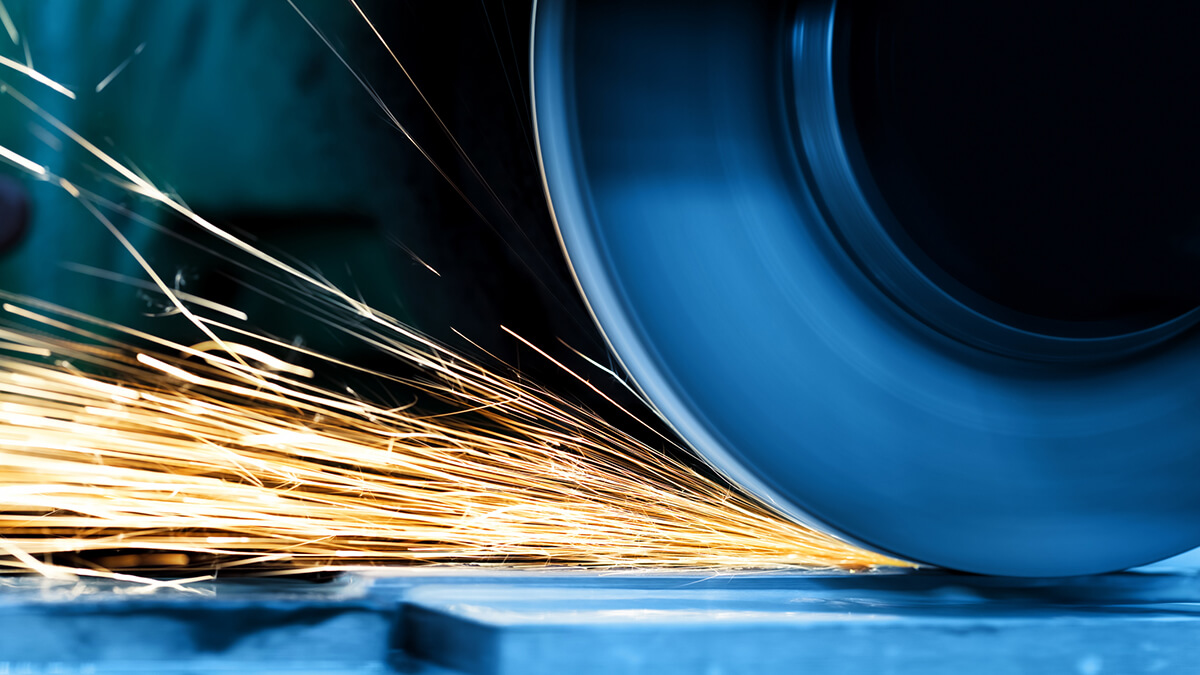From the rudimentary stones used in ancient times to the highly sophisticated wheels of today, the evolution of grinding wheel materials and design has been marked by a relentless pursuit of precision and efficiency. Early grinding wheels were often made from natural abrasives like sandstone. Today, materials such as aluminum oxide and silicon carbide, along with advancements in design and the introduction of additive manufacturing, have revolutionized the grinding process.
Historical Perspective
The history of grinding wheel materials dates back thousands of years, where abrasive particles were initially embedded in natural materials like wood or leather. With the advent of industrialization, natural materials gave way to more durable and consistent options. Silicon carbide and aluminum oxide emerged as early synthetic abrasive materials, revolutionizing grinding processes in the 19th century.
Traditional grinding wheels, while effective, may lack the durability required for grinding certain advanced materials and achieving the precision demanded by modern manufacturing. Advanced grinding wheels, utilizing ceramic, CBN, or diamond abrasives, offer superior performance, especially when dealing with hard and challenging materials. They excel in providing high material removal rates, extended tool life, and enhanced precision, making them indispensable for cutting-edge manufacturing processes.
Latest Materials in Grinding Wheel Manufacturing
Ceramic Abrasives
Ceramic grinding wheels offer enhanced durability and heat resistance. Composed of a mixture of ceramic grains and bonding agents, these wheels excel in high-speed and heavy-duty grinding applications.
2. CBN (Cubic Boron Nitride) Grinding Wheels
CBN abrasives are composed of boron and nitrogen atoms in a crystal lattice structure. CBN wheels excel in grinding ferrous materials, providing high thermal conductivity and resistance to wear. Their exceptional hardness makes them suitable for grinding hardened steels, cast iron, and nickel-based alloys, making them invaluable in industries like aerospace and automotive.
3. Diamond Grinding Wheels
Diamond abrasives are the hardest known materials, and their exceptional hardness makes them ideal for grinding hard and brittle materials. Widely used in industries such as electronics and medical devices, diamond wheels ensure prolonged tool life and high material removal rates due to their exceptional hardness.
Structured Abrasives
Innovations in abrasive structures, such as engineered grain spacing and orientation, contribute to improved efficiency and surface finish. These structured abrasives enhance chip evacuation and reduce heat buildup during grinding, leading to higher material removal rates and improved wheel longevity.
Advanced Bonding Systems
The bonding system in grinding wheels has undergone significant advancements. Resin, heat fused glass, and metal bonds are tailored to specific applications, providing the necessary strength, porosity, and thermal stability. Hybrid bonding systems combine the advantages of different bonds for enhanced performance.
Post-Processing of 3D-Printed Components
Additive manufacturing (AM) processes, such as 3D printing, often produce components with unique geometries and surface characteristics. While the layer-by-layer nature of additive manufacturing imparts incredible design flexibility, it can also leave surfaces with rough textures and imperfections. Grinding techniques are crucial to achieving the surface finish, precise dimensions, and mechanical integrity required for 3D-printed components. Innovations in abrasive materials, including superabrasives like cubic boron nitride (CBN) and diamond, enhance the ability to handle diverse 3D-printed materials with varying hardness.
Robotics, Automation, and Real-Time Monitoring
With the integration of robotics and automation into grinding processes, automated systems can handle repetitive and intricate grinding tasks with unmatched precision, contributing to consistency and efficiency. Industry 4.0 has made real-time monitoring and quality control possible, as sensors and monitoring systems provide instant feedback, allowing for adjustments on the fly and ensuring the highest quality in post-processed components.
Challenges and Opportunities
The connection between additive manufacturing and grinding presents both challenges and opportunities. Complex geometries produced through AM may require innovative grinding approaches to ensure precision and surface quality.
Challenges
Surface Complexity
The intricate geometries and varying layer heights of 3D-printed components pose challenges in achieving uniform grinding across the entire surface.
Material Variability
Different additive manufacturing materials, such as metals, polymers, or composites, exhibit varying hardness and abrasiveness. Grinding 3D-printed components requires a nuanced approach to accommodate these material differences and avoid unintended damage during the post-processing phase.
Thermal Considerations
Certain 3D-printed materials may be sensitive to the heat generated during grinding. Managing thermal effects is crucial to prevent distortion, warping, or changes in material properties that could compromise the final product's integrity.
Opportunities
Precision Refinement
Grinding offers the precision required to refine the surface finish of 3D-printed components. This is particularly crucial in industries like aerospace and medical, where exact specifications are non-negotiable.
Dimensional Accuracy
While additive manufacturing is highly accurate, there may be slight deviations in dimensional accuracy. Grinding allows for fine-tuning, ensuring that components meet tight tolerances and specifications.
Customization and Complexity
The ability to tailor grinding processes to specific geometries enhances the versatility of additive manufacturing applications.
Surface Integrity and Quality Control
Surface integrity is a critical factor in industries such as medical device manufacturing and aerospace engineering. The quality of surfaces post-grinding directly impacts the functionality, reliability, and safety of the final products. Advancements that have been made include:
Metrology
Metrology tools, such as profilometers and coordinate measuring machines (CMMs), provide precise measurements of surface features, roughness, waviness, and form, allowing manufacturers to assess the quality of ground surfaces with high accuracy.
Microscopy
Advanced microscopy techniques, such as electron microscopy and confocal microscopy, enable detailed examinations of surface structures and potential defects at the micro and nanoscale levels.
Non-Destructive Testing:
Non-destructive testing techniques, such as ultrasonic and eddy current testing, can be employed to assess subsurface conditions without altering the surface.
Future Directions
The future of advancements in surface integrity lies in the integration of Artificial Intelligence (AI) for real-time quality control and defect detection. Real-time monitoring has become increasingly sophisticated, utilizing sensors to gather data on parameters like temperature, vibration, and grinding forces. AI algorithms can analyze these vast amounts of data in real-time, identifying patterns and deviations that may not be apparent through traditional inspection methods.
The synergy between additive manufacturing and grinding is poised to address the unique challenges posed by 3D-printed components, promising continued innovation and excellence in precision manufacturing.









.jpg)
.jpg)
.jpg)


.jpg)